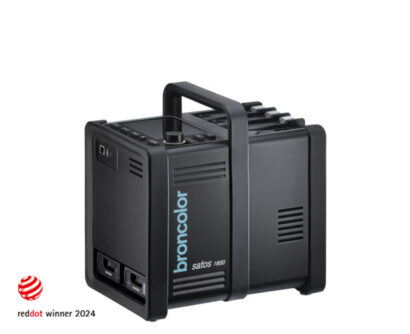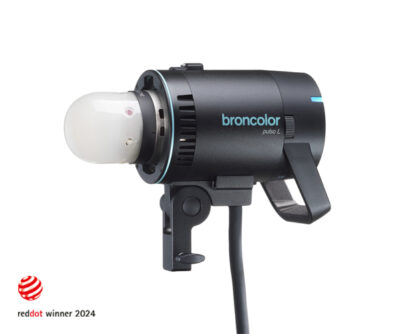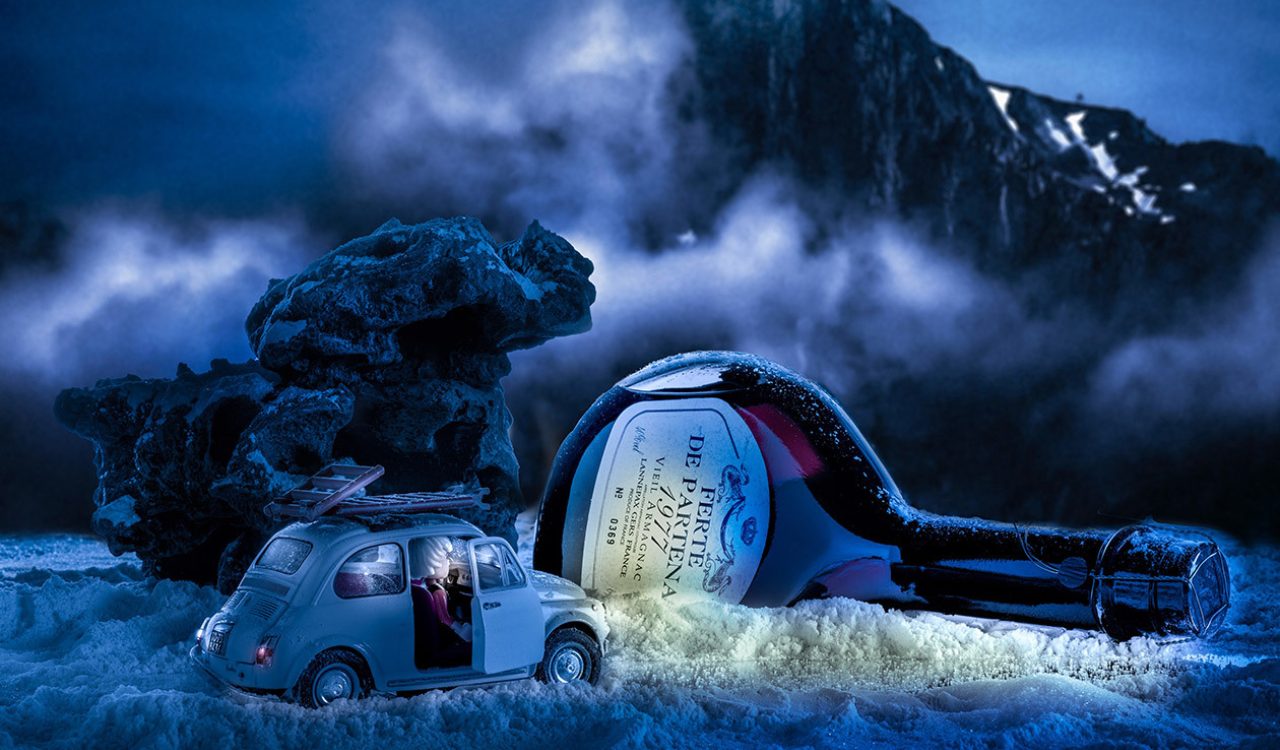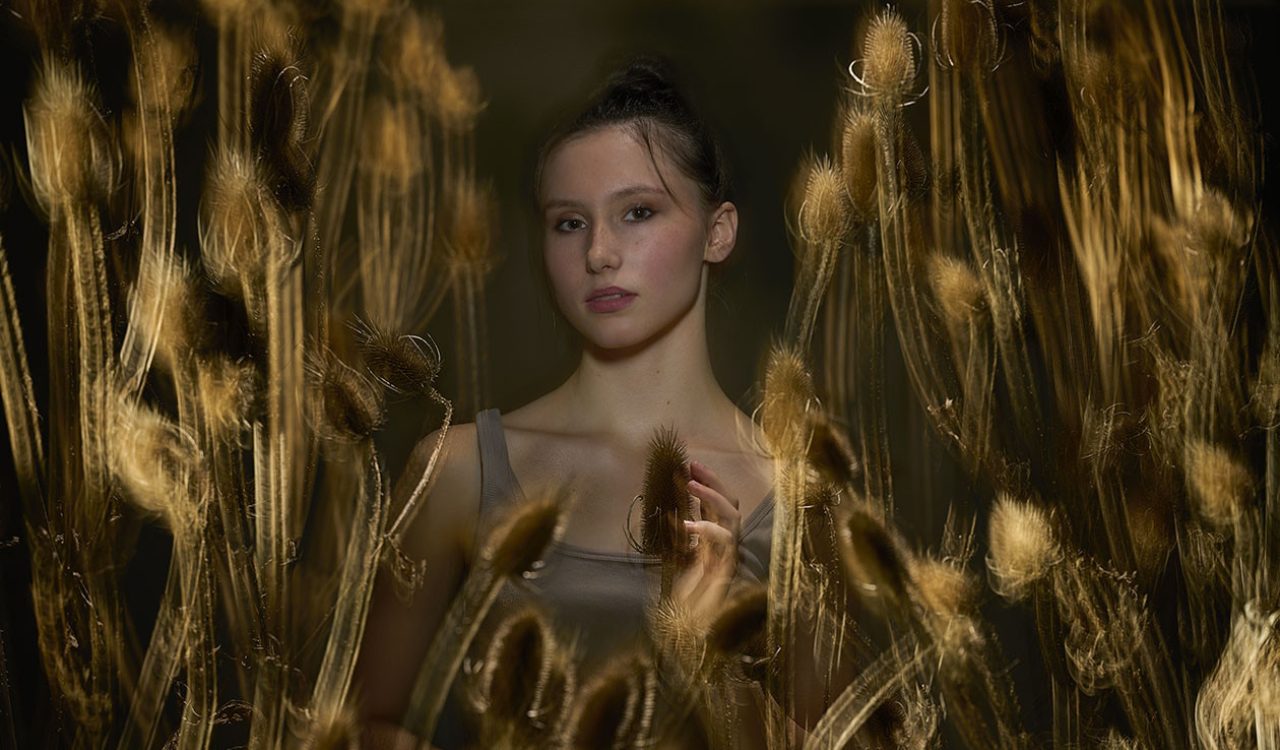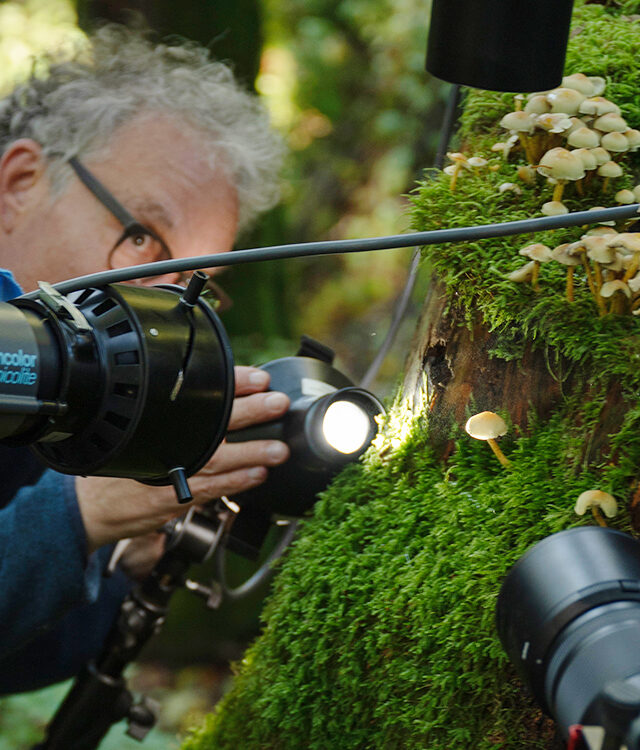When photographing shiny objects, it is advisable to spend enough time at the beginning positioning and aligning the object and camera. If you notice too late that the object should be rotated by a few degrees, you may need to start over with the lighting setup.
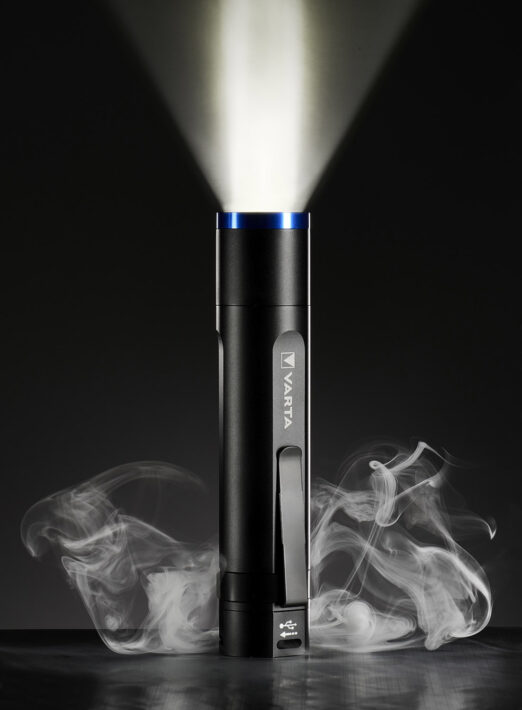
The flashlight was positioned in such a way that the design feature of the flattened areas was optimally showcased. The main light was supposed to additionally highlight the prominently visible surface with the brand logo. For this purpose, I chose a Picobox on a Picolite (1) as the main light. Its small dimensions created only a narrow reflection on the round metal surface, while the flat area was evenly illuminated across the entire width. The beautiful gradations in the radii of the surface and the clip are also thanks to the small dimensions of the Picobox.
The fill light on the opposite side was intentionally kept subtle so as not to compete with the main light. Therefore, it was sufficient to reflect the light from the Picobox using a small, square mirror.
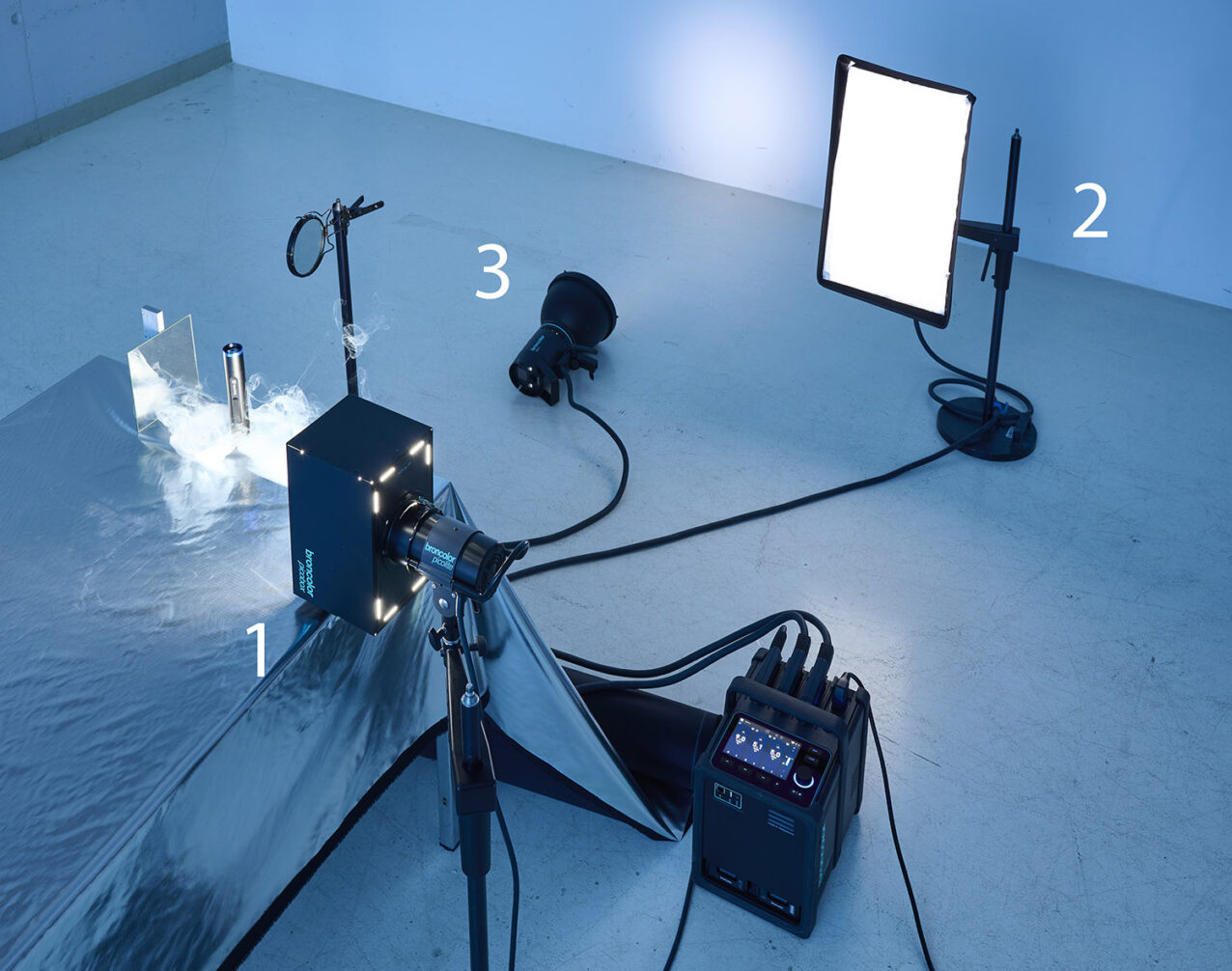
A softbox measuring 35x60cm (2) was placed as close as possible outside the image frame. As a result, the contour light, which cleanly separates the dark object from the background, was very narrow and left a black edge in front of the surface.
I decided not to extend the contour on the left, as the background was additionally faintly illuminated just above the horizon of the table edge with a standard reflector and honeycomb grid (3), ensuring separation. A round cosmetic mirror only created a reflection at the top, where the black object would not have otherwise clearly separated from the also black background.
The beam of the flashlight was also created purely photographically. After the flash, in a darkened studio, a piece of white paper was held in the light beam for three seconds and constantly moved.
The photograph was taken with a mirrorless full-frame camera and a focal length of 105 mm. With ISO 64, the aperture was set to 22 and the exposure time was 3 seconds.

